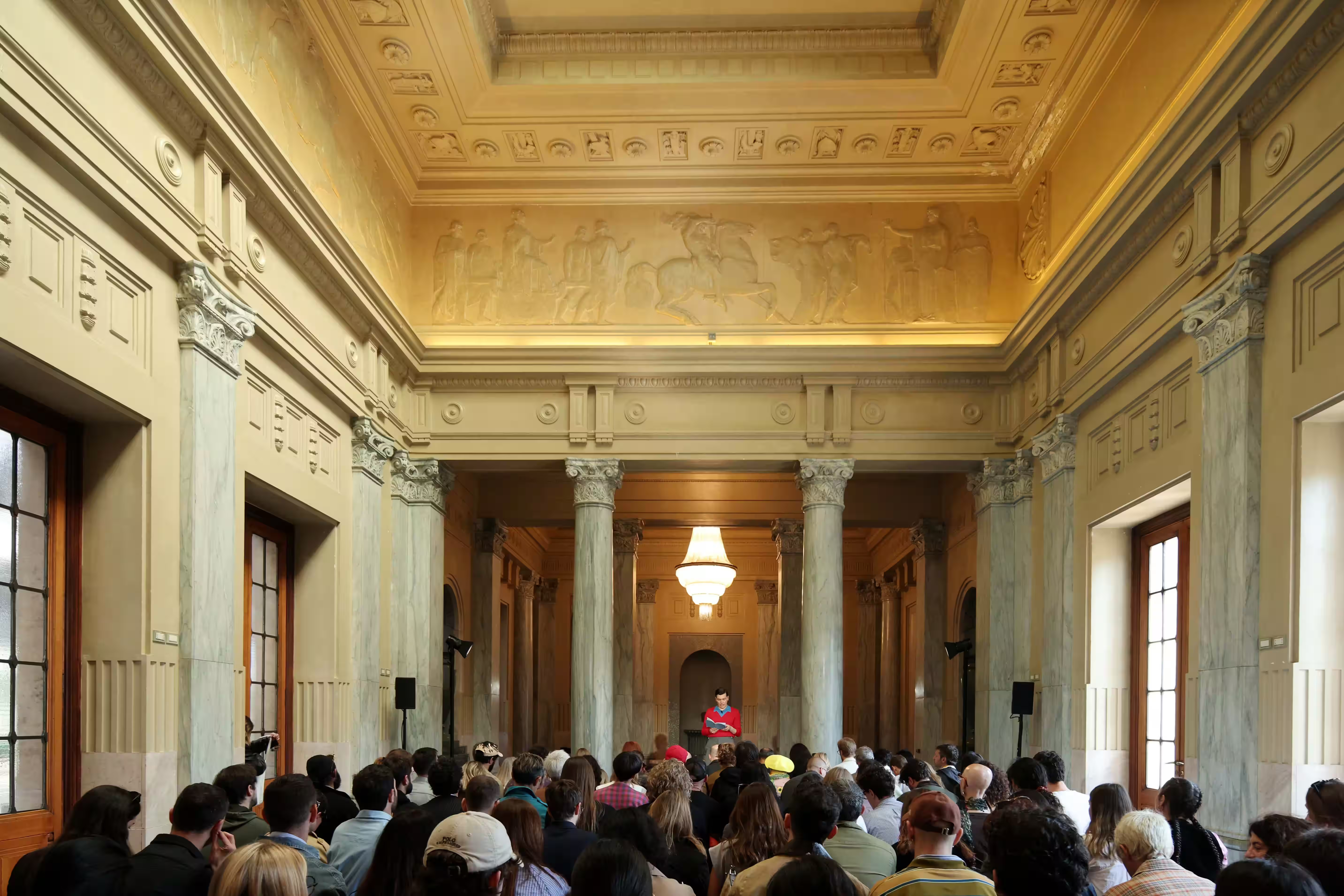
Simone Farresin of Formafantasma reading at Prada Frames. Image courtesy of Prada.
While Salone buzzes with newness, Prada Frames focuses on what goes under the radar. Held across two historically loaded sites—the Paglione Reale, once a private waiting room for Italy’s royal family, and the Arlecchino Train, a 1950s design marvel by architects Gio Ponti and Giulio Minoletti—the 2025 edition of the multidisciplinary symposium considers what it means to be in transit.
Curated by design and research studio Formafantasma, Prada’s annual conference unfolds as an inquiry into how we live. “On Forest,” the inaugural edition in 2022, examined materiality via timber. The following year, “Materials in Flux” explored waste as matter in constant transformation, before Prada Frames shifted to spatial and social concerns in 2024 with “Being Home,” which investigated the politics of domestic life. This year, the lens widens.
and social concerns in 2024 with “Being Home,” which investigated the politics of domestic life. This year, the lens widens.
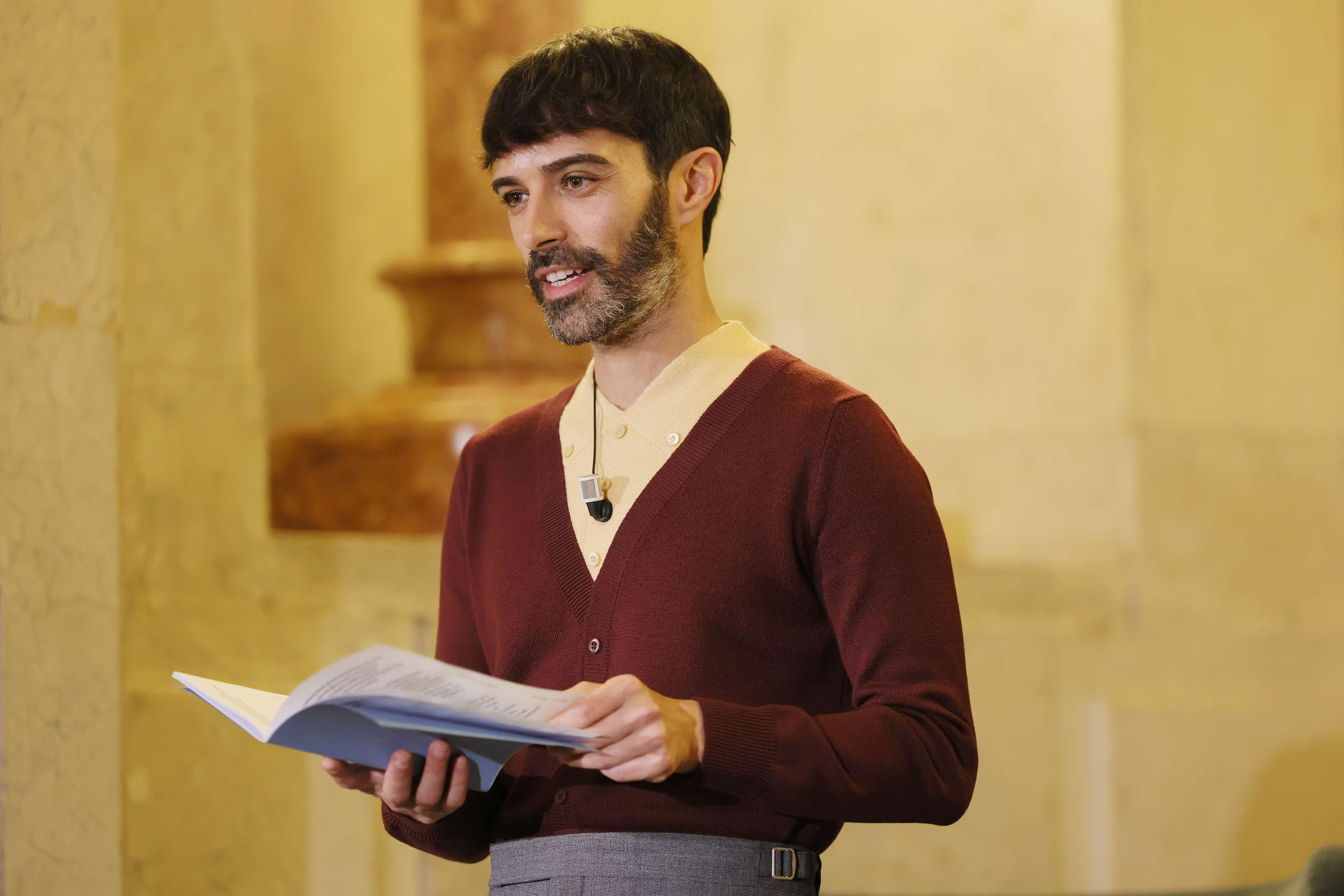
Andrea Trimarchi of Formafantasma reading at Prada Frames. Image courtesy of Prada.
With “In Transit,” Formafantasma co-founders Andrea Trimarchi and Simone Farresin focus on infrastructure: both the visible architecture of everyday life and the network of choices, restrictions, and forces that quietly govern movement through the world. As Trimarchi points out, Salone itself depends on these invisible systems: “We all fly in, we all use trains to arrive, we are all there to observe products that required transportation.”
This year’s programming spans three thematic tracks: Digital Infrastructures: Power, A.I., and the Built Environment, Global Infrastructures: Trade and Logistics, and Infrastructures of Power: Surveillance and Control, each contextualized by design critic Alice Rawsthorn. The lineup includes voices like A.I. scholar Kate Crawford, architect-curator Marina Otero Verzier, writer Rose George, architectural historian Jesse LeCavalier, theorist Samia Henni, and artist Hito Steyerl. One lecture examines the link between water scarcity and the massive volumes needed to cool data centers. Another explores how freezers evolved global food distribution, enabling the centralization of urban life. As a whole, this year’s programming draws attention to the ripple effects of the hidden architecture of modern life, revealing how everyday infrastructures quietly shape entire ecosystems in ways we don’t immediately perceive.
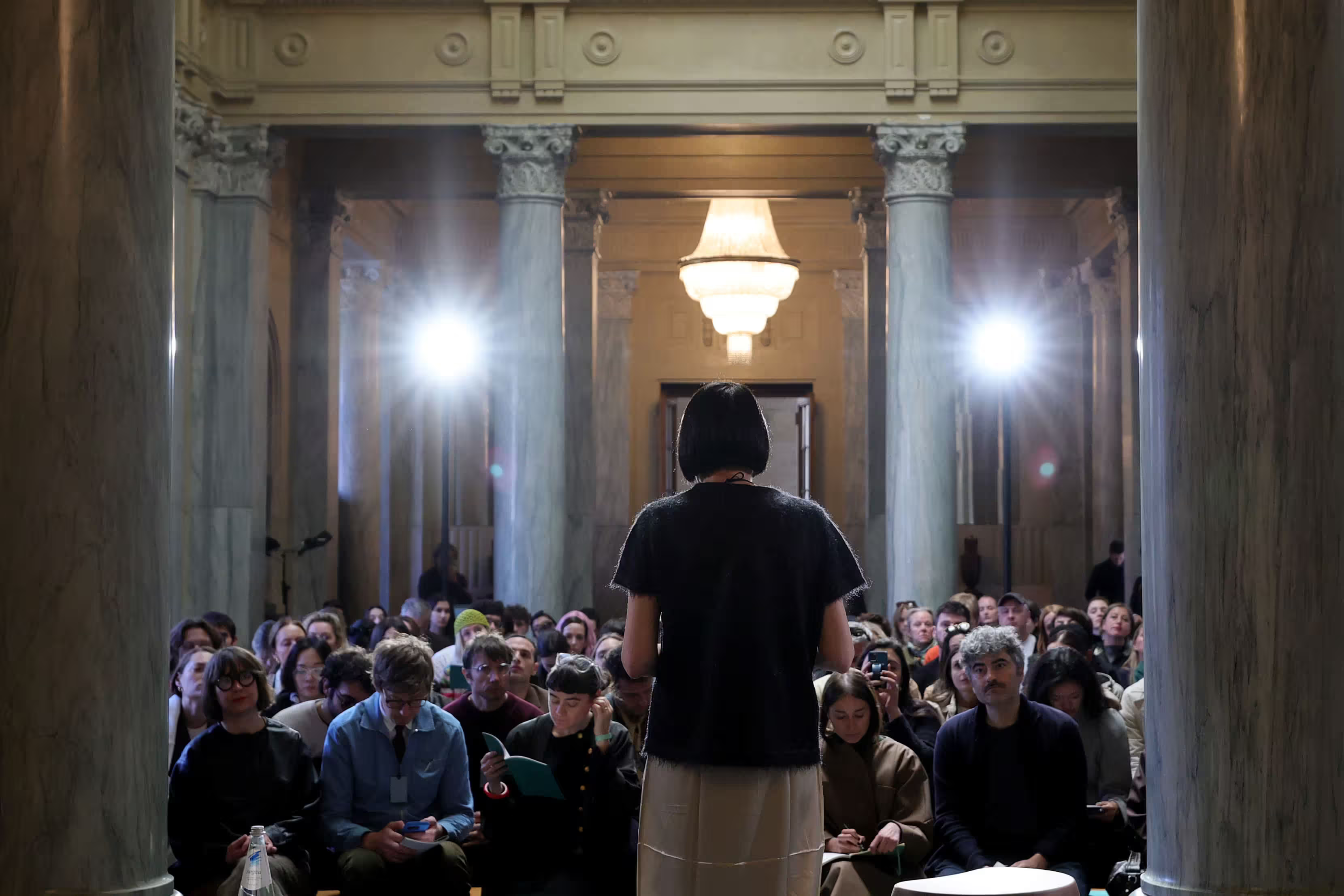
Alice Rawsthorn reading at Prada Frames. Image courtesy of Prada.
Now, why would a fashion house care about critical theory in the first place? It might seem like a contradiction: a luxury brand aligning itself with discourse that interrogates, in part, the environmental impact of its own industry. This, though, is exactly where Prada feels at home. In fact, inquiry is baked into the brand’s very D.N.A. Take its Spring/Summer 2021 Dialogues campaign, which posed open-ended questions like: “Do you think in languages or images?” and “Should we slow down or speed up?” Slightly solipsistic, obviously rhetorical, even as viewers were prompted to “answer at prada.com.”
With Prada, it’s always more than just sartorial signaling; the brand has dabbled in everything from art and film to architecture and design, sometimes all at once. Then there’s Fondazione Prada, its long-running cultural arm, which has staged exhibitions on everything from surveillance to neuroscience. This intellectual curiosity starts at the top: Miuccia Prada, whose expansive worldview and interest in contemporary issues have shaped an ethos that’s never only about selling clothes.

Formafantasma. Image courtesy of Prada.
“When you think about fashion on a superficial level, it seems that it is always about ‘the new,’ but what’s special about working with Prada is that it’s never a one-off,” explains Farresin. “We’ve had the chance to construct more complex narratives and investigate subjects with more depth over time.” The best part, the designer adds, is the trust they are given. This sustained approach facilitates a mode of inquiry that mirrors Prada’s own design philosophy: Curious and functional, intentionally unresolved, gesturing toward utility while probing what it means today.
So, what then, does “In Transit” ask? To start, the scale at which infrastructure organizes and limits daily life. “If you think about the greatest revolutions in technology—the Internet, distribution systems like Amazon, even A.I. with its data centers—they’re all related to infrastructure,” notes Trimarchi. “We also wanted to think not only about the distribution and movement of things, but also of bodies and humans.” Why do goods, data, and images cross borders with ease, while bodies are often met with resistance?
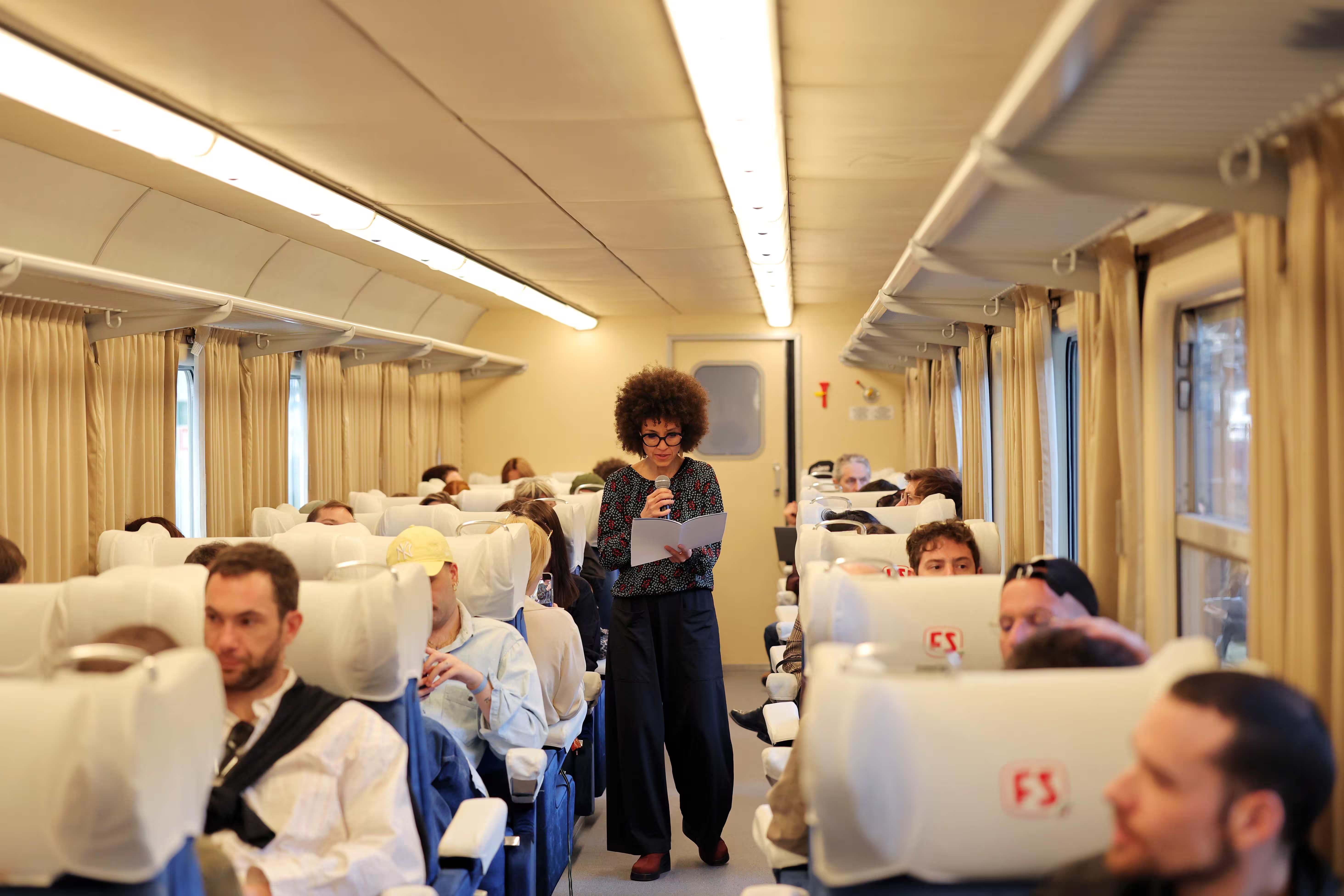
Samia Henni reading at Prada Frames. Image courtesy of Prada.
The setting for the symposium speaks directly to these broader ideas about moving freely in the world. “Urban systems of transportation are all outcomes of design,” Farresin says. Like fashion, design influences collective behavior. A staircase in a train station, for example, suggests direction: up or down. But a station without an elevator or ramp suggests that only certain bodies are meant to move at liberty through the space. Therefore, while design can provide solutions, it can also produce complications. This tension plays out in the symposium’s programming as well as its location.
“Last year, we were in a home. This year, we’re at Central Station,” Trimarchi explains. One of Milan’s busiest transportation hubs, a literal crossroads that connects the city across Italy and with the world, the station sees over 300,000 people pass through each day, with even higher numbers during Salone. It calls to mind the fashion industry’s own global loop: Prada’s seasonal shows in Milan, as well as the wider rhythm of fashion weeks across New York, London, Paris, and the many other cities that host their own. Such annual circuits romanticize travel without grappling with how it is often a privilege, a circumstance of time and place. When debates around migration and border control are intensifying across the U.S. and much of the world, the question becomes: who, and what, gets to pass through without friction?
What Prada Frames brings to the global art and design community year after year is a focus not only on what design looks like, but what it does. Like fashion, design is a world-making practice. And with that comes the responsibility to question not just what gets made, but how, and for whom.
Prada Frames runs through April 8, 2025 at the Padiglione Reale and Arlecchino Train at Piazza Luigi di Savoia 1, Milan Central Station, 20124, Milano, Italy.










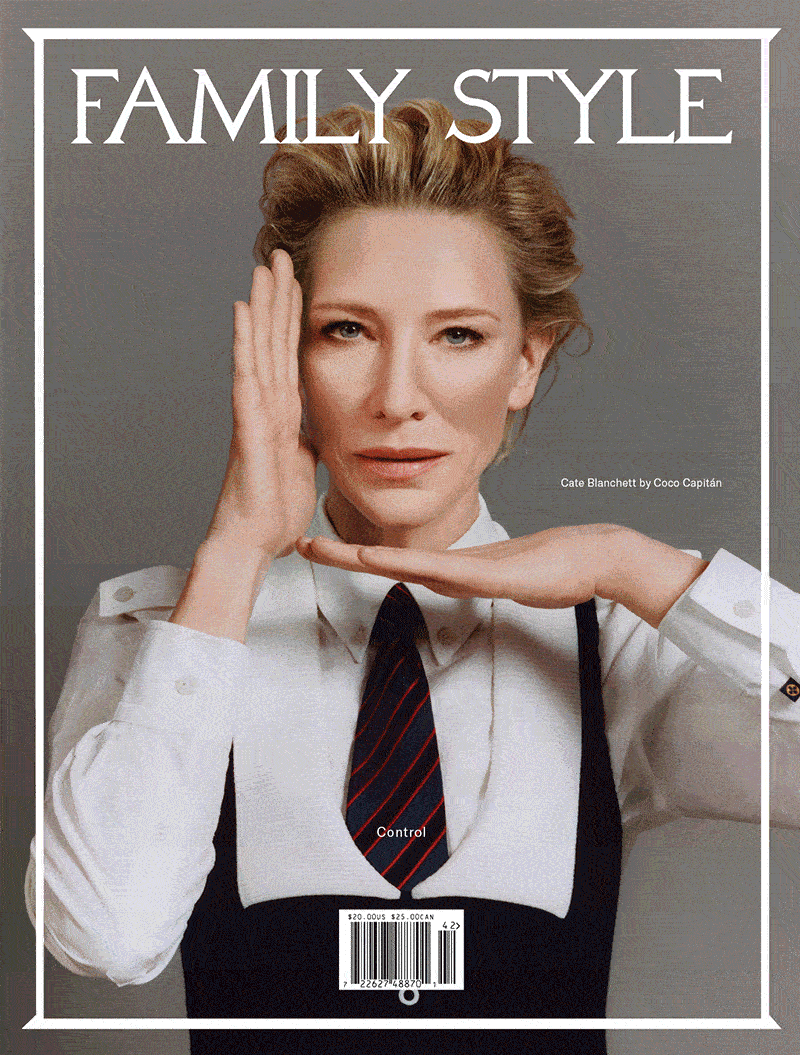


.avif)

